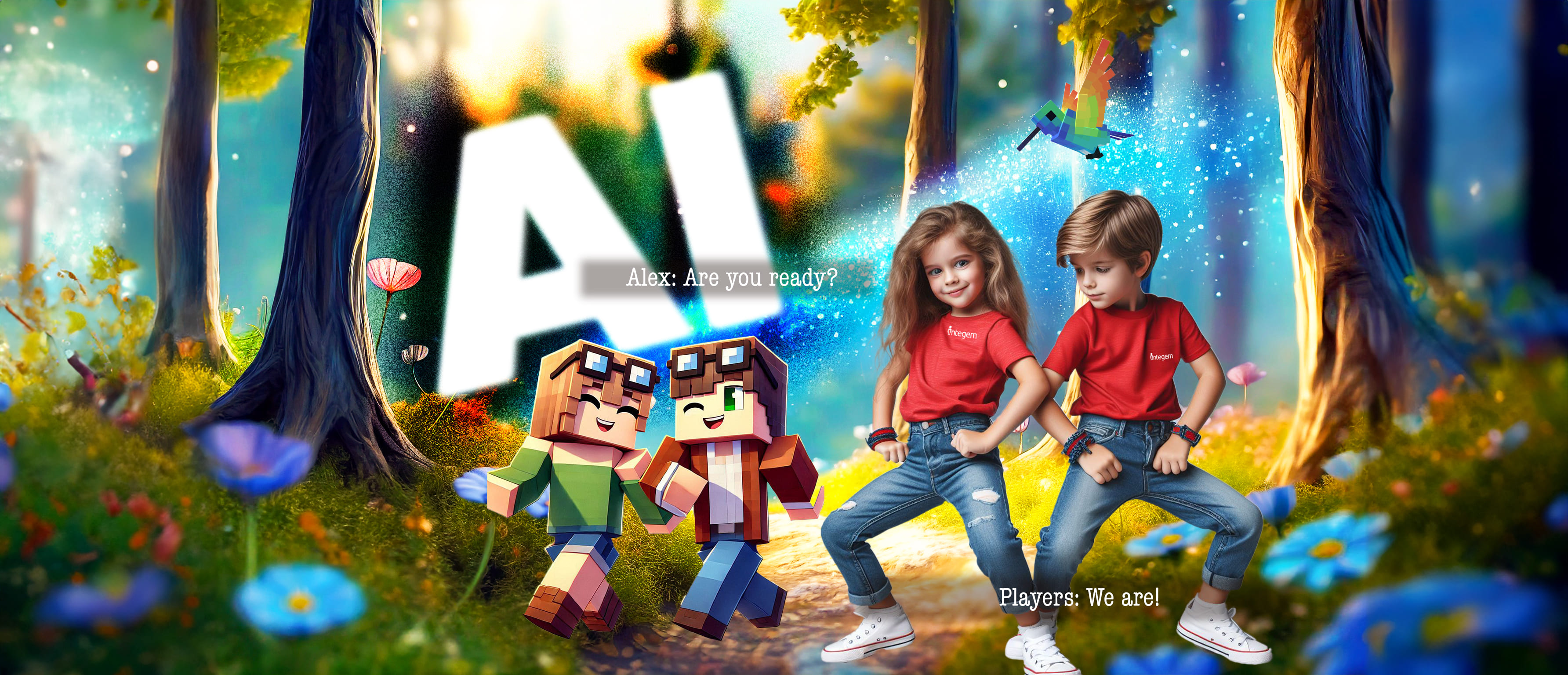
Advanced AI+AR Game Design with Coding for Junior
AGES: 5.5-8
LENGTH: 3 weeks
DESCRIPTION
Junior tech enthusiasts and game creators (grades K-2) will embark on an exciting journey of discovery in the 3-week AR Coding, AI and Game Design Camp. This interactive and educational program invites students to delve into the advanced world of Holographic AR coding and AI-enhanced game design, blending imagination with cutting-edge technology.
No prior computer knowledge is needed. Students will progress from a beginner level to the advanced level.
This camp is fully accredited by the Accrediting Commission for Schools, Western Association of Schools and Colleges (ACS WASC).
Fun outdoor and indoor activities and plays are part of the camp experience.
Students will learn coding, Holographic Augmented Reality (AR), and Generative AI concepts as they step into the advanced world of game creation.
Campers will use Scratch coding to design AI-powered, interactive games, teleporting into magical worlds where they create and control thrilling adventures. They’ll face clever AI villains, collaborate with virtual companions, and program unique challenges. Imagine designing a magical forest where AI animals guide players through hidden paths or creating a daring quest where an AI villain tests players with riddles and puzzles. Hands-on activities, like helping a friendly robot navigate a maze or outsmarting a tricky AI dragon, make learning problem-solving and creative thinking an exciting and approachable journey into advanced technology.
What will students do in the camp?
- Introduction to Scratch Coding and Holographic AR Design
- Introduction to Game Design
- Interactive Storytelling and Creative Challenges
- Advancing in Scratch Coding and Holographic AR Design
- Interactive Holographic AR Game Design
- Introduction to AI
- Integrating AI into AR Games
- Creating AI-Enhanced AR Games
What is the magic of AI+AR Game Design over traditional approaches?
Holographic AR and AI-enhanced game design offer a groundbreaking learning experience that goes far beyond traditional coding and game creation.
Scratch coding introduces students to programming with an intuitive, visual interface, enabling them to create characters, and interactive game elements. Holographic AR takes it further, allowing students to teleport into their games and experience their creations firsthand.
Adding AI transforms the experience into something even more dynamic and interactive. Students can design characters that think, adapt, and respond to player actions, creating a new level of immersion and engagement. Imagine a camper designing a dragon that offers tips to players or poses challenges based on their decisions—every interaction becomes a chance to learn and innovate.
This approach combines coding, storytelling, design, and AI, fostering a holistic understanding of game creation. Students don’t just learn to write code; they learn to build worlds, design characters, and craft narratives that reflect their imagination.
The hands-on process of designing, testing, and refining their games helps students develop resilience, attention to detail, and problem-solving skills. By integrating advanced AI and AR concepts into a kid-friendly framework, the camp makes cutting-edge technology accessible and inspiring, helping students naturally progress from beginner to advanced levels.
Students will learn the following:
- Computer, keyboard, mouse, and Internet skills (Junior Level)
- Introductory and advanced Scratch coding (Junior Level)
- Introductory and advanced Holographic AR concepts (Junior Level)
- Advanced Holographic AR logic and coding (Junior Level)
- Advanced UI/UX (user interface/user experience) design (Junior Level)
- Holographic AR game design (Junior Level)
- Visual communication skills (Junior Level)
- Interactive storytelling techniques (Junior Level)
- Debugging and problem-solving strategies (Junior Level)
- Introduction to Generative AI (Junior Level)
- AI integration for dynamic game design (Junior Level)
- The Design Thinking process based on Stanford University’s Design School curriculum (Junior Level)
